Full transcript of Supreme Court oral arguments in Trump 14th amendment case
Inside the court: CNN reporter describes her experience in the press pen
While dozens of journalists are inside the courtroom at the Supreme Court, not one laptop or cellphone is.
Unlike campaign events – which I usually cover – inside the Supreme Court, no electronics are allowed. Just pen and paper.
Even the smallest sounds can be heard, like someone jingling keys — or papers shuffling, as I discovered, as my case preview pamphlet slid to the floor.
An area for the press exists to the left of the bench, and good views are not guaranteed. Rows F and G are partially obstructed by large marble columns draped in red curtains with gold trim. The spaces between the columns are open, and depending on your vantage point, slices of the courtroom are visible.
From where I was sitting in seat G-1, I had a nearly perpendicular view of the justices, in sight of Amy Coney Barrett, Neil Gorsuch, Clarence Thomas and Brett Kavanaugh.
While Chief Justice John Roberts, Justices Samuel Alito, Elena Kagan and Ketanji Brown Jackson were a little harder to see. Sitting up tall in my seat or moving only my head slightly to the left helped to determine who had the floor, as well as their recognizable voices.
You cannot switch seats, move your seat or lean your body over for a better glimpse, which I learned quickly.
Shifting my chair over an inch didn’t go unnoticed by staff monitoring the press, as I was asked to shift it right back.
Press may exit the courtroom during arguments, but once you leave, you cannot return. Several reporters, however, left before the case was submitted — at least one person after Trump attorney Jonathan Mitchell’s time at the lectern and more after Jason Murray’s turn.
While silence is requested in the high court, there were moments of levity, where the justices made a comment that evoked laughter. One example was during an exchange between Mitchell and Kagan.
Mitchell acknowledged to one of her points, “There certainly is some tension and some commentators have pointed this out. Professor Baude and Professor Paulsen criticized Griffin’s case very sharply…”
Kagan kindly interrupted, “Then I must be right,” as people laughed.
Another moment of laughter surrounded the order of specific questions. Kagan jumped in as Jackson pivoted to another point about the officer/office debate: “Could we — is that OK if we do this and then do that? Will there be an opportunity to do officer stuff or should we–?”
“Absolutely. Absolutely,” Roberts said, diffusing the confusion, as people laughed.
Here are key takeaways from the Supreme Court oral arguments on the Trump 14th Amendment case
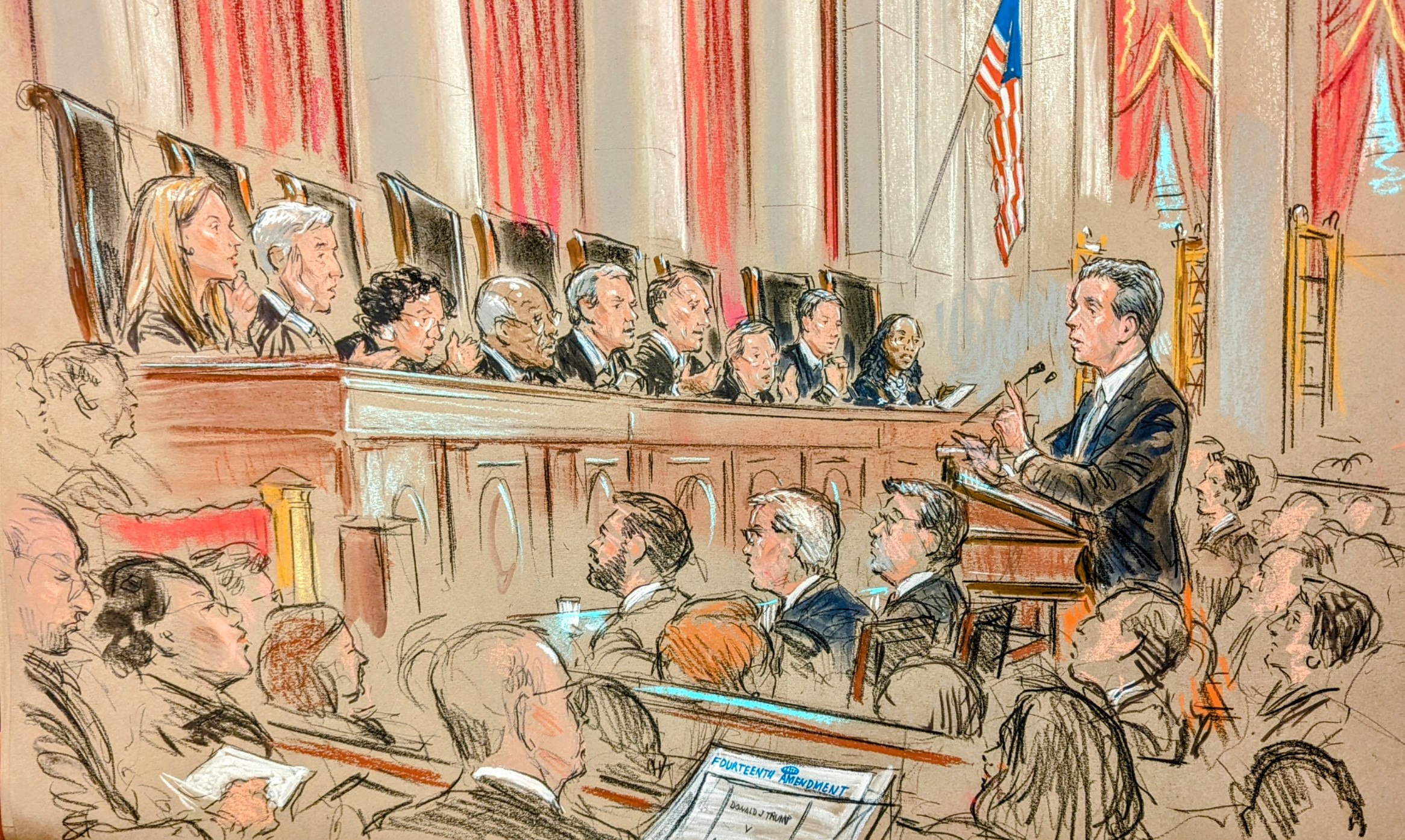
The Supreme Court signaled Thursday it is poised to back former President Donald Trump and fend off a blockbuster challenge to his eligibility to appear on Colorado’s ballot.
Conservatives suggest several ways to side with Trump: Throughout the course of the arguments, the court’s conservatives repeatedly questioned whether the insurrection ban was intended to apply to former presidents and whether the ban could be enforced without Congress first enacting a law. Others delved into more fundamental questions about whether courts removing a candidate from the ballot is democratic.
“Your position has the effect of disenfranchising voters to a significant degree,” conservative Justice Brett Kavanaugh said in one of the more striking exchanges with attorneys.
If Trump is removed from the ballot in Colorado, Chief Justice John Roberts predicted that states would eventually attempt to knock other candidates off the ballot. That, he signaled, would be inconsistent with the purpose and history of the 14th Amendment. “It’ll come down to just a handful of states that are going to decide the presidential election,” Roberts said. “That’s a pretty daunting consequence.”
Jackson and liberals have tough questions for challengers: Another sign that the court was leaning toward Trump’s position: Even some of the liberal justices posed difficult questions to the lawyers representing his challengers.
Notably, Justice Ketanji Brown Jackson, a Joe Biden nominee, said that the 14th Amendment provision did not include the word “president,” even though it specifically listed other officials who would be covered, such as members of Congress. That is a central argument Trump’s attorneys have raised in the case. “I guess that just makes me worry that maybe they weren’t focused on the president,” Jackson said.
Justice Elena Kagan questioned the implications of a single state banning a candidate in a presidential election. “Why should a single state have the ability to make this determination not only for their own citizens, but for the rest of the nation?” Kagan asked.
Justices didn’t focus on Trump’s January 6 actions: The nine justices spent little time on the former president’s actions surrounding the January 6 attack on the US Capitol that sparked the ballot challenge in Colorado and elsewhere. There were more questions, in fact, about the Civil War and how the insurrectionist ban in the 14th Amendment of the Constitution was enacted in order to grapple with confederates who fought against the Union.
See sketches from today’s Supreme Court oral arguments on Trump’s ballot case
Bill Hennessy, CNN’s regular sketch artist for the Supreme Court, captured scenes of today’s oral arguments on Donald Trump’s ballot eligibility case as it unfolded.
Trump’s attorney, Jonathan Mitchell, kicked off the arguments with a brief opening statement and then fielded a barrage of questions from the nine justices. Jason Murray, representing the Colorado voters who challenged Trump, presented next. Finally, Shannon Stevenson, Colorado’s top appellate attorney, spoke on behalf of Secretary of State Jena Griswold. At the end of the arguments, Mitchell then returned for a short rebuttal.
Norma Anderson, the Colorado Republican leading the lawsuit seeking to disqualify Trump from office, attended the arguments. Trump was not in the room and slammed the case against him in remarks from Florida.
While the Supreme Court shares live audio from proceedings, cameras are not allowed inside the room. Here’s a look at some of the scenes Hennessy captured in his sketches:
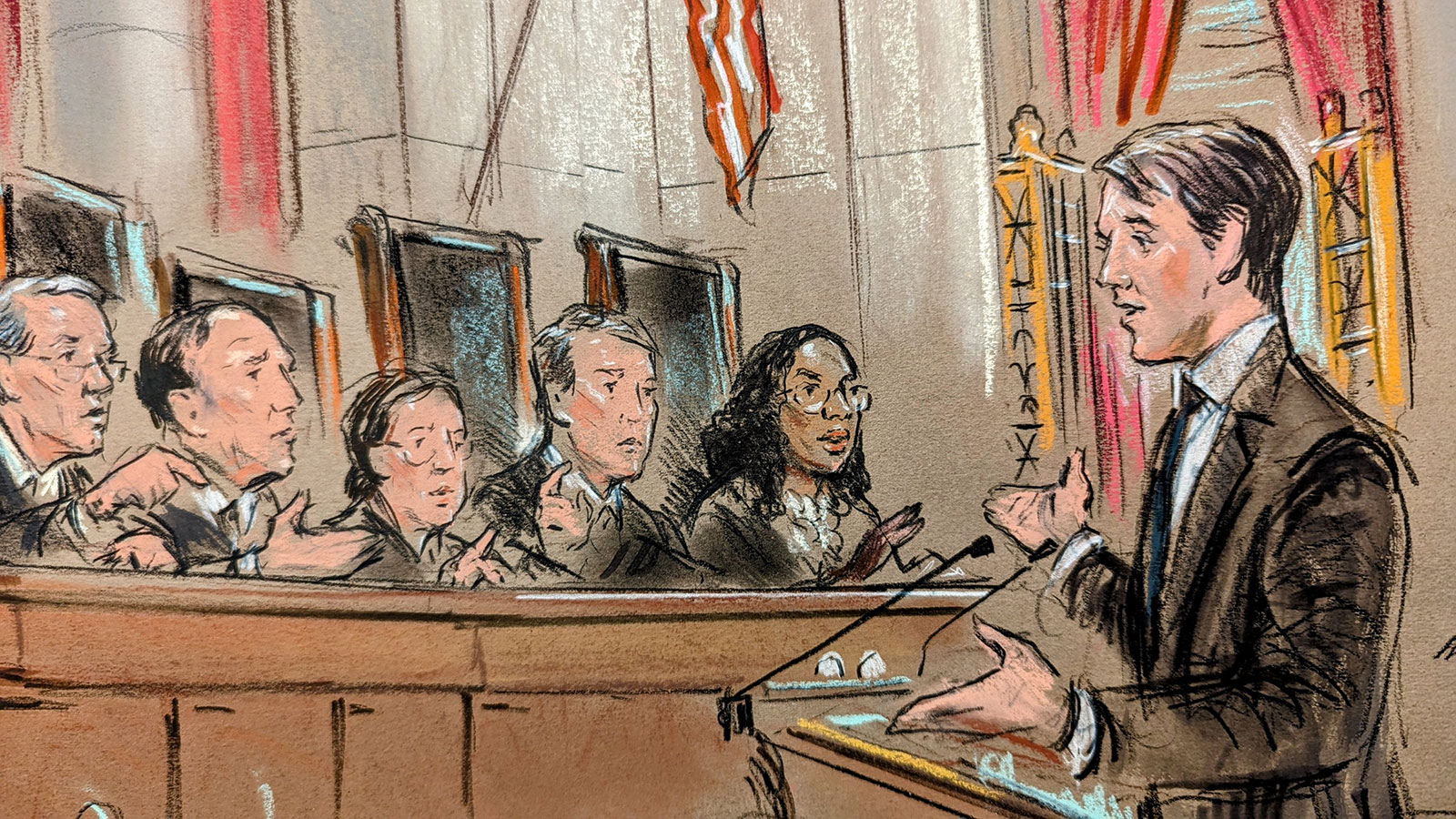
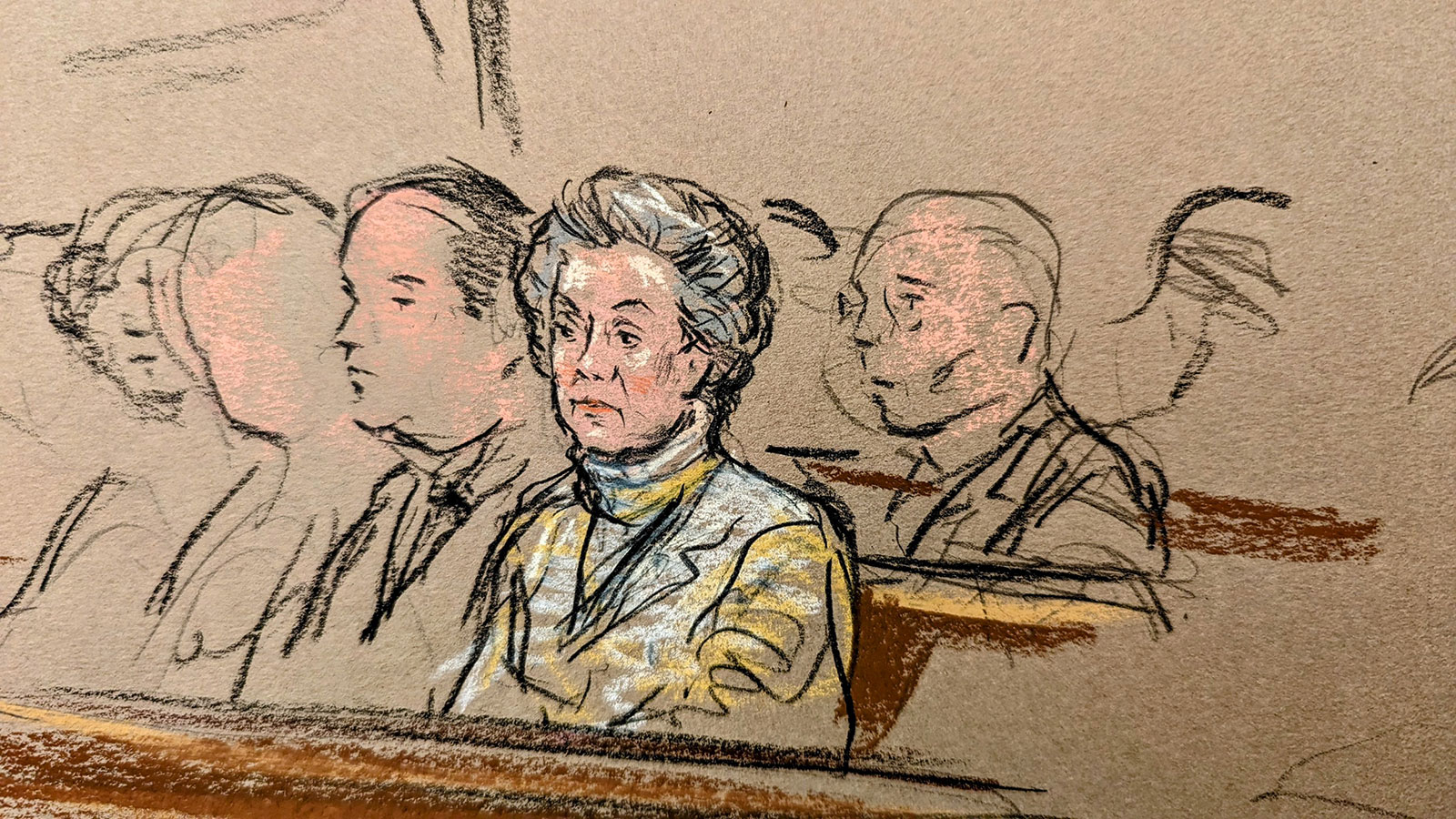
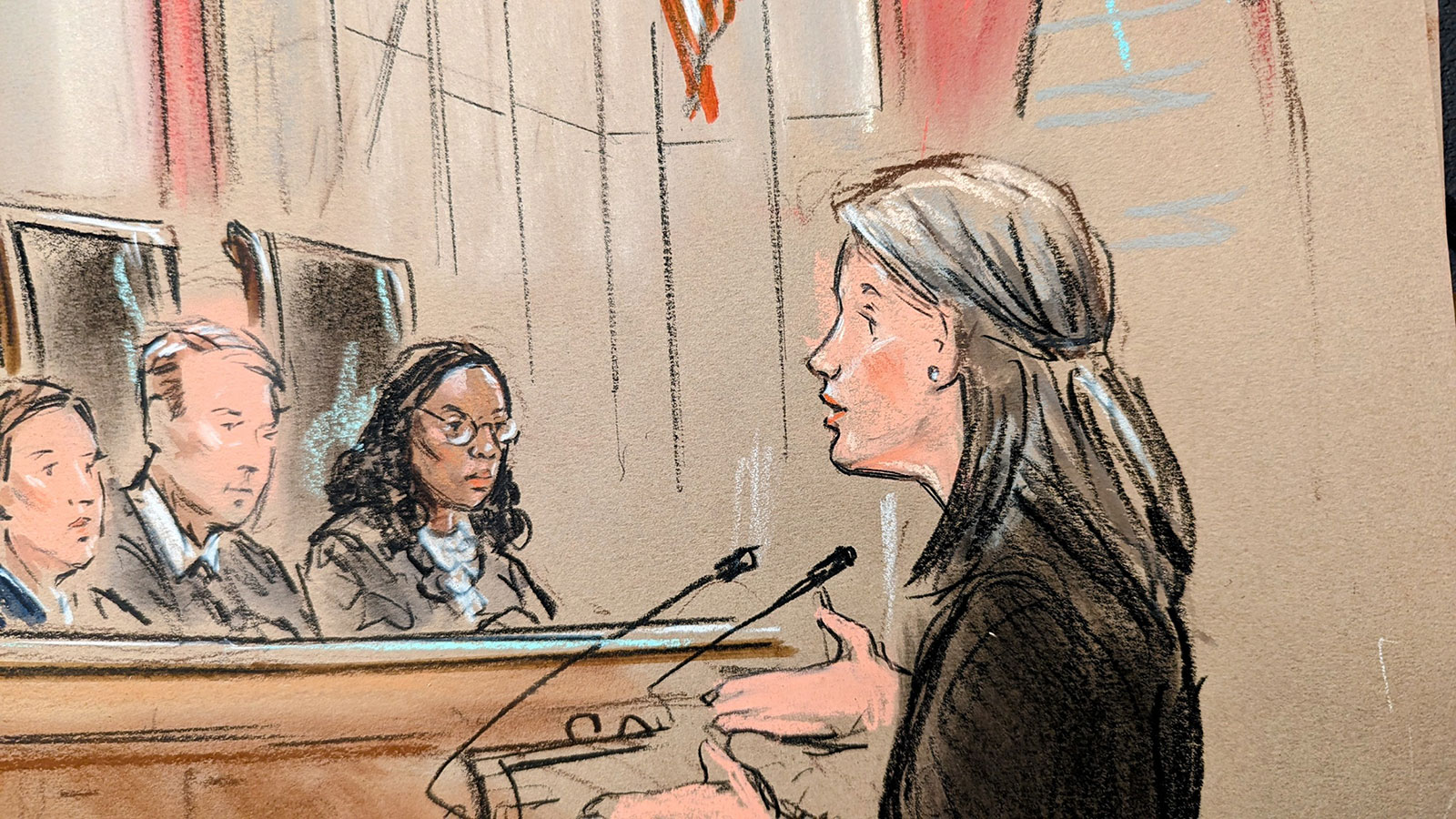
Thursday’s courtroom atmosphere was “much more tepid” in comparison to Bush v. Gore, CNN analyst says
From CNN’s Tori B. Powell
The atmosphere in the Supreme Court on Thursday was “much more tepid” when compared to the oral arguments held for Bush v. Gore in 2000, according to CNN senior Supreme Court analyst Joan Biskupic, who was in the courtroom for hearings during both cases.
“Not only could you feel pretty quickly where it was going, the rhythm was not confrontational,” she said of Thursday’s hearing.
She noted that the justices today did not talk to each other as they commonly do during oral arguments.
“In this case, you could feel that like they didn’t have to make the case to each other,” she said. “There were enough of them who came into this argument ready to reject the Colorado voters’ position, so the tension was just much lower.”
During the Bush v. Gore hearing, Biskupic said “there was a lot more tension among the justices, a lot of interrupting, a lot of rapid fire questions.”
Fact Check: Trump falsely claims there were “no guns” on January 6
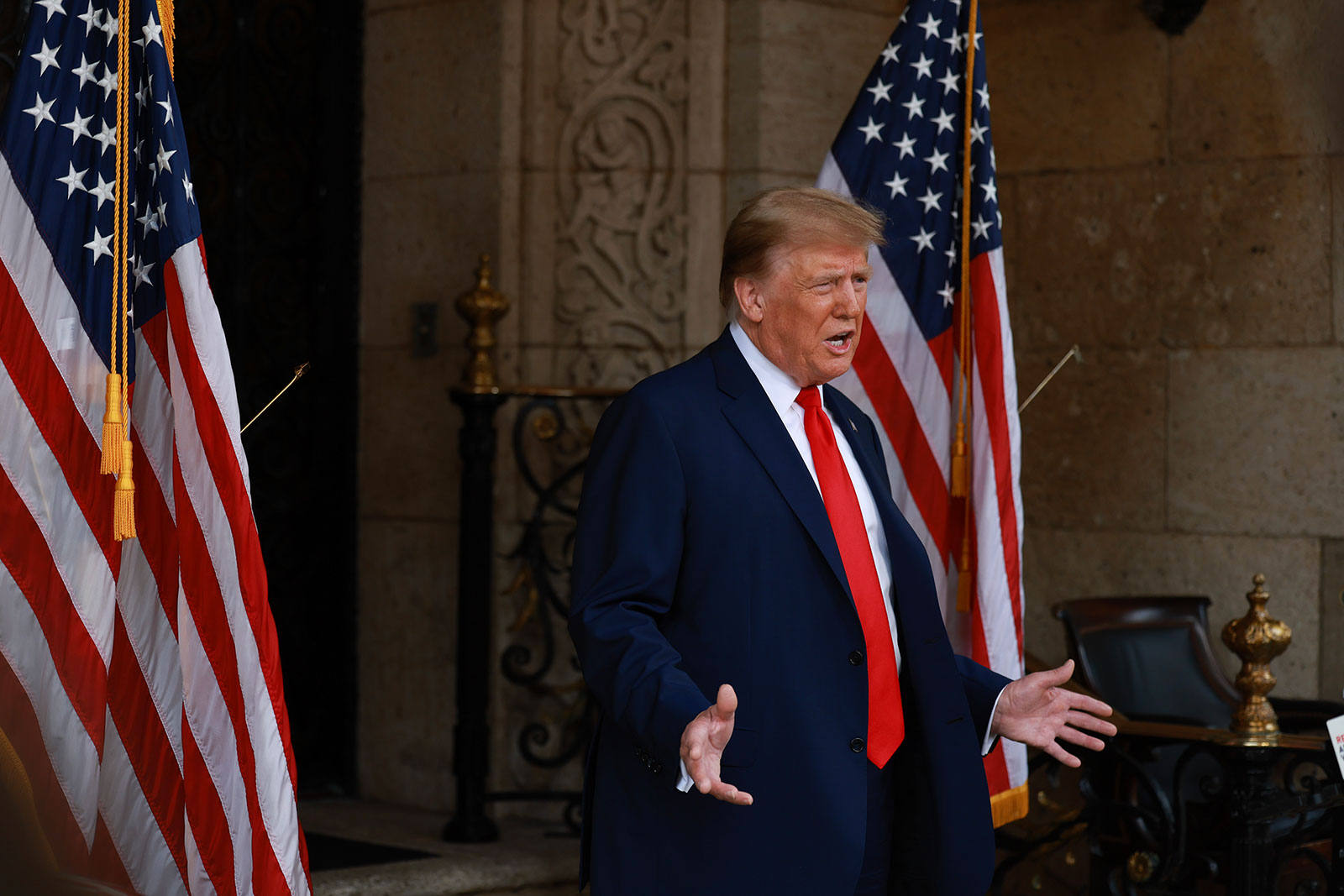
In comments to reporters on Thursday after the conclusion of the Supreme Court hearing, former President Donald Trump claimed that “there were no guns, there were no anything” at the Capitol on January 6, 2021.
Facts First: Trump’s claim is false. People who illegally entered Capitol grounds during the January 6 riot were armed with guns and a wide variety of other weapons, including stun guns, knives, batons, baseball bats and chemical sprays. The Justice Department said in an official update in January 2024 that 116 of the people who have been charged in connection to the riot “have been charged with entering a restricted area with a dangerous or deadly weapon.”
We may never get a complete inventory of the concealed weapons the rioters possessed on January 6, since nearly all of the rioters were able to leave the Capitol without being detained and searched, so it is possible that most rioters were unarmed. But it was always apparent from video footage that there were a variety of unconcealed weapons in the crowd that day — and it has been proven in court that at least some of the people who illegally entered Capitol grounds on January 6 were armed with guns.
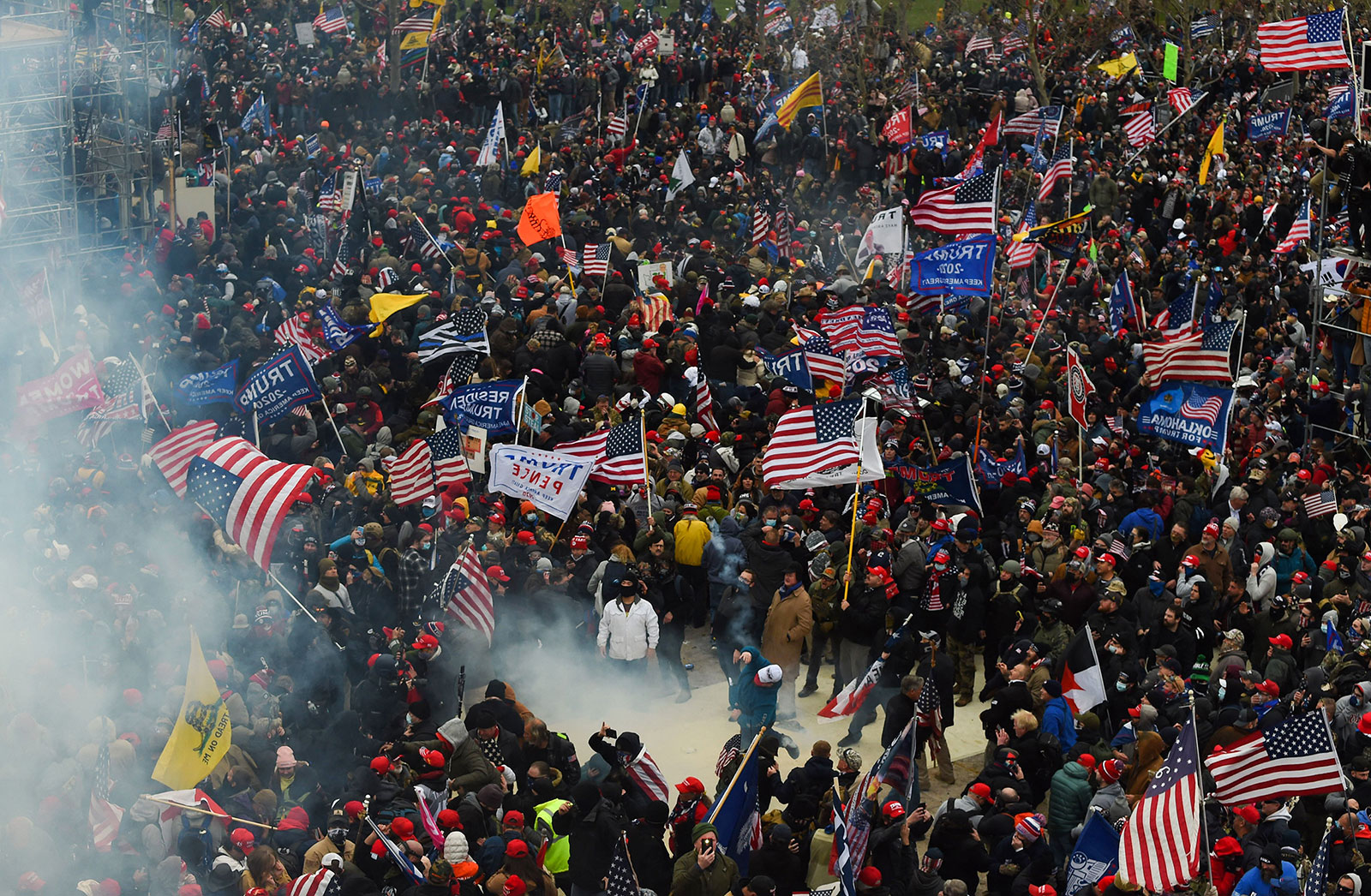
In its 2023 ruling disqualifying Trump from the Colorado ballot under the Constitution’s ban on insurrectionists holding office, the Colorado Supreme Court wrote: “Contrary to President Trump’s assertion that no evidence in the record showed that the mob was armed with deadly weapons or that it attacked law enforcement officers in a manner consistent with a violent insurrection, the district court found — and millions of people saw on live television, recordings of which were introduced into evidence in this case — that the mob was armed with a wide array of weapons.”
Analysis: Justices could place Trump back on the ballot in Colorado
From CNN’s Marshall Cohen
Derek Muller, an election law expert at Notre Dame Law School who filed a neutral brief that offered analysis of key legal questions, said after the hearing that the justices are likely to put Donald Trump back on the ballot in Colorado.
“The justices seemed concerned that one state could affect the entire presidential election process, and that there needed to be some guidance from Congress before such an extraordinary measure could be taken,” Muller said. “The Court seemed inclined to let the political process play out.”
Muller – who hasn’t taken a position on Trump’s eligibility under the 14th Amendment – pointed out that several justices expressed unease with states implementing the ban without some sort of guidance from Congress.
“It’s not surprising to see the justices express discomfort with the proposition that the United States Supreme Court should wade into a factual and legal mire like this,” Muller said. “But it was somewhat surprising that there seemed to be consensus around the theory that states could not do this without congressional legislation.”
Here’s what to know about the arguments made by the attorney for Colorado voters

Jason Murray, the attorney representing a group of Colorado voters challenging Donald Trump’s eligibility for the 2024 ballot at the Supreme Court, finished his arguments after nearly an hour.
Here’s they key moment to know about:
Justices focused on ballot eligibility over January 6: Murray argued the January 6, 2021, attack on the US Capitol was unprecedented and rose to the level of an insurrection, but many of the justices focused on issues in this case that would take them away from the facts of the attack, such as how and if states determine ballot eligibility.
Much of the questioning of Trump’s attorney Jonathan Mitchell also revolved around similar sweeping questions of state power and how the 14th Amendment could allow for Colorado to remove Trump from the 2024 ballot.
History of 14th amendment: Chief Justice John Roberts suggested one of the main arguments Murray raised was “at war” with the history of the 14th Amendment’s insurrectionist ban at center in the case.
“The whole point of the 14th Amendment was to restrict state power,” Roberts said. “On the other hand, it augmented federal power.”
Justices were concerned about a single state’s power: Several justices signaled their skepticism over whether a single state should have the power to decide what candidates can be on the ballot for a national election. “Why should a single state have the ability to make this determination not only for their own citizens but also for the nation,” Justice Elena Kagan asked, saying that “seems quite extraordinary.”
Justice Amy Coney Barrett echoed the concerns, adding: “It just doesn’t seem like a state call.”
In response, Murray argued that each state would still have the ability to determine what appears on their own ballots, despite what officials in another state might decide.
CNN
Related:
Trump v. Colorado









